Have you ever wondered how Meta and Google manage to make money even without charging for the use of their platforms? The answer is simplepaid traffic!
Both big techs have a revenue model based mainly on ads, i.e, companies all over the world pay to advertise their products and services to users of these platforms.
Alphabet, which owns Google and YouTube, derives 69% of its revenue ($257 billion) from ads. Already Meta Meta, which owns Instagram, WhatsApp and Facebook, the figure is even more significant: 97.5% of its revenue ($117.9 billion) comes from paid trafficaccording to information from Visual Capitalist.
This data reinforces the relevance of paid traffic in the digital marketing world. That's why in this article we're going to explain how you too can take advantage of this strategy to achieve your business goals.
What Is Paid Traffic?
Paid traffic is a marketing strategy digital that aims to bring visitors to a website, blog or e-commerce through paid ads.
Paid traffic ads are served on social networks, search engines and other sites, and are generally paid for every click (CPC) or every thousand impressions (CPM).
One of the main tools for generating paid traffic is Google Ads, a Google platform that allows you to place ads at the top of searches. On social media, the main paid traffic tool is Meta Ads, which allows you to advertise on Facebook and Instagram.
What's the Difference Between Paid Traffic and Organic Traffic?
When you search for a subject or product on Google, there are two types of results:
- Paid, at the top and bottom with an "advertisement" label;
- Organic, in the middle of the page and without any label.
While in paid traffic there is a need to pay for each click or ad impression, in organic traffic the marketing strategy is known as Search Engine Optimization (SEO).
SEO, on the other hand, consists of technical optimizations on the website, blog or e-commerce so that Google and similar tools place the organic link in a more relevant position in a given search. In other words, they will be positioned at the top of the page.
There is also a financial factor that affects strategies. Each time a user clicks on an ad, the advertising company will be charged a fee. Now, if the user clicks on an organic link, nothing will be charged to the company that earned that position on Google.
For more information, see our full article on Paid Traffic vs. Organic Traffic.
Why Invest in Paid Traffic?
"My company is still small (or medium-sized), does it make sense to invest in paid media or is it only for a big company?"
Before we try to answer this question, imagine the following scenario:
There are three stores in a city, all of which are owned by the same brand and sell exactly the same products. However, each one is in a different location:
- Store 1 is located in a deserted street, where hardly any cars or people pass by, only a few people know about the store;
- Store 2, on the other hand, is on a busy shopping avenue and is well known and frequented by many people who pass by every day;
- Finally, Store 3 is in the most upmarket area of the city's main shopping center. Consequently, it has the highest turnover of all.
Loja 1 is like an e-commerce on the internet. In a deserted street, where few people, such as friends and relatives, know, visit and buy the products on offer.
And just like that street, don't expect your online store to become busy overnight. To get more people to buy your products, you'll have to invest in promotional activities.
Loja 2 is like a business that works with organic SEO actions, content on social networks and other forms of promotion without ads. New people will get to know the store independently of paid campaigns, but gradually.
This long-term investment of time and resources requires consistency in order to produce more organic traffic. Nothing happens by magic.
Store 3, on the other hand, is the business that has done a good job of generating organic traffic and also spends part of its budget on paid traffic. The more traffic strategies combined, the greater and faster the growth.
Therefore, investing in paid media is not exclusive to large companies! The important thing is to plan and execute the campaign carefullybased on data and analysis, so that the investment in paid media generates a satisfactory return.
Advantages of Investing in Paid Traffic
"But why should I invest in paid traffic if I can appear for free with organic traffic?"
This is a question that many entrepreneurs ask, especially when they need to cut costs. The common idea is that you have to pay for ads on a recurring basis, taking up a large part of your marketing budget.
In reality, investing in paid traffic should be seen exactly as the name suggests: an investment. So we're going to explain the main advantages of investing in paid traffic and answer this question with ideas you can apply today.
Increasing Reach and Visibility
Paid traffic allows you to pay to have a space in the feed of other users. In other words, invest in reach a larger audience than you could organically.
Exposure through paid traffic reinforces the brand's presence in consumers' minds, increasing the number of people who know about your products and services, as well as building your authority in the online marketplace.
When a brand is present on several platforms, it establishes a reputation based on trust. The public begins to recognize it as a company with a name to live up to in the market and has fewer reservations about making a purchase.
Enhancing the Dissemination of Specific Actions
Contrary to common sense, you don't need to adopt paid traffic as a recurring recurring in your business. That monthly budget exclusively for promoting your content on the internet can be done in another way.
The aim of paid traffic is to boost products, actions or content and strengthen your brand's presence. Therefore, one way to use your budget punctually is to set aside amounts to invest only when you have a product launch, service or marketing action.
Paid traffic is just one part of your marketing mix, so it's up to you to decide when and how to use it. There are several scenarios in which these strategies can be favorable and bring positive results for your business. The important thing is to consider this option in your marketing decisions.
Generate more lead conversions
When a user searches the internet, it's a sign that they already know they have a problem and are looking for a solution.
That's why paid traffic is an effective strategy for reaching these leads who recognize a need and want to find an answer. The focus is on targeting your content, products and services at people who are already convinced that they need to make that purchase.
Consequently, careful selection of terms and keywords will boost conversions, by providing the relevant content and solutions that the user needs at the exact moment of their search.
Improving Brand Reputation on Google
A consumer wants to buy a product and has to choose between two companies that sell the item. While researching prices, he reads some comments from people who bought from one of the companies and had problems with the quality of the product. Afraid of having the same problem, the consumer chooses to buy from the competitor.
Have you ever heard of such a case? Yes, they are more common than we think.
So, in order to stand out and gain a reputation in the market, paid traffic can be an effective strategy.
By investing in relevant keywords, creating attractive ads and necessary content, you position your brand as a reference in the eyes of the world's largest search engine.
In addition, Google's algorithm takes into account the time users spend on your site after a search. It's a way of proving that the page is interesting and effectively helps users in their search for information.
In this way, by providing a positive experience, your reputation is strengthened in relation to your competitors. And, as your brand becomes more visible and respectable, you will gradually increase the number of sales.
Conduct Tests and Learn from the Results
Testing is the most consistent way to improve a paid traffic campaign. So take the time to test different types of campaigns, ad formats, keywords and segmentations to find out what works best for your target audience.
Record what you learn straight away and use that learning for other campaigns, making digital marketing performance increasingly more effective.
A study carried out by Advanced Web Ranking shows that when the results are only organic (without ads), first place receives 31.4% of the clicks, followed by 14.7% and 8.6% respectively for second and third place. Global data for desktop in November 2022.

The eighth position, on the other hand, receives only 1.7% of the clicks. In the endalmost all the clicks go to the first five positions. Think how challenging it is to compete with so many companies for one of these five spots!
In this way, although it is possible to position your site organically at the top of Google searches, it is a medium and long-term strategy. It requires a lot of investment in SEO and content production.
"So I should leave organic traffic aside"?
No! Large e-commerces and websites, while appearing at the top of organic searches, also invest in ads for searches relevant to them, ensuring that the two forms of traffic work together.
What are the Costs of Paid Traffic?
When opting for paid traffic, you should bear in mind that you are investing your money to boost brand engagement. E, in the paid campaign equation, the budget factor is one of the factors that helps determine the success of ads.
The second factor is the choice of pricing model: cost per click (CPC) and cost per thousand impressions (CPM).
Both play a role in your paid campaigns, and understanding how each works is essential to making the right decisions.
Cost per Click (CPC)
To start the conversation, you need to understand that CPC is charged from advertisers when a consumer clicks on their ad to get more information. In other words, even if the consumer has seen your ad, only the click is counted.
CPC is commonly used in sponsored link campaigns, such as Google Ads or Facebook Ads. Its importance lies in the fact that advertisers can accurately evaluate the performance of their online marketing campaigns.
By measuring the cost of attracting traffic to a website or landing page, since the advertiser only pays for user clicks, he has an overview of his cost of acquisition (CAC).
How to use the CPC
To use CPC, you need to understand the auction system.
When building a paid traffic campaign, you need to determine the maximum amount you are willing to pay for each click on your ad, what we call a bid.
This value can vary depending on various factors, such as competition, audience segmentation and the quality of the ad. The ad platform, such as Google Ads, will auction the ad space and display the ads based on the bid amount and the relevance of the ad to the user.
Suppose you are promoting an e-commerce of women's fashion and set a maximum CPC of R$ 2.
- If a user clicks on your ad, you will pay up to R$ 2 for that click.
- If the user doesn't click, you don't pay anything.
This way, you can control your investment and direct resources to more efficient campaigns.
And the CPC can be optimized continuously. But to do so it is necessary to regularly monitor campaign performance. If adjustments need to be madeit is important to analyze the metrics - click-through rate (CTR), conversion rate and cost per conversion - and then choose what to improve.
Cost per Thousand Views (CPM)
On the other hand, CPM is a pricing model that charges advertisers for every thousand views of the ads shown to consumers.
It is especially interesting for campaigns whose main objective is to increase the reach and generate awareness among a large number of people.
By repeatedly showing an ad to a wide audience, at some point your brand will be noticed. Even if the consumer doesn't immediately click to buy, the memory that your company sells something that may be of interest to them is imprinted..
This connection with the public is what will ensure that your brand is one of the most remembered at the moment the purchase is considered.
Suppose you sell men's shoes. A man, needing a new pair of social shoes, remembers your ad and how nice the products were. So he goes to Google or social media and searches directly for the brand. There, you've already won a customer.
How to use CPM
CPM is commonly used in branding strategies, where the exposure of the message is more important than the number of clicks or immediate conversions.
Similar to CPCyou need to set a budget and establish the maximum amount that you are willing to pay for every thousand ad impressions. This metric allows advertisers to plan and control their spending according to the desired reach.
Imagine the following example: a sporting goods brand wants to increase the number of people who know its products. To do this, it segments the audience for its ads according to popular sports news sites and other other pages where sports enthusiasts are present.
It is essential that this segmentation is done carefully, as well as the choice of display channels, so that the messages are taken to the right audience. This is the only way to make an ad a success.
Where Can You Generate Paid Traffic?
To achieve results with paid traffic, it is essential to know where to apply your efforts. You can take advantage of paid traffic on various platforms, such as:
- Google;
- Facebook;
- Instagram;
- YouTube;
- LinkedIn;
- TikTok;
- Pinterest;
- Waze.
These are the most visited platforms on the internet, so they are the ideal places to promote your ads. With billions of hits a day, these platforms offer advanced metrics tools that provide valuable insights into your target audience, user behavior and reaction to ads.
In addition, the digital allows you to reach your audience through interactive campaigns to maximize the return on your investment.
How to Choose Where to Generate Paid Traffic?
Choosing a platform to generate paid traffic depends on a number of factors.
The most important thing is that each of these platforms has a group of people as users. While LinkedIn users are in higher education or working in the labor market, Instagram and TikTok have a larger presence of high school students.
Therefore, each campaign requires a unique paid traffic strategy for the chosen platform and knowledge of metrics analysis. There are a variety of KPIs to evaluate results, identify strengths, quick-wins and opportunities for improvement.
So when choosing where to run your ad campaign, think about where your audience is and start planning accordingly.
Main Paid Traffic Tools
There are a wide variety of tools you can use to promote your products and services, from the most well-known to the least popular, each with unique features that can be exploited to reach your target audience effectively.
In this article we'll look at ten options and briefly explain how they work. This will give you enough information to choose which one to include in your paid traffic strategy.
1. Google Ads

Google Ads is one of the main paid traffic platforms available on the market. With it, you can create ads in a variety of formats and run them in places on Google's search and display networks.
In the Google Ads auction system you bid for the display of your ads on certain keywords, based on the quality of the ad and the value of the bid.
Another highlight is that the platform offers the opportunity to do A/B tests to determine which ads work best for the defined audience.
The platform also offers resources for optimizing campaigns already running and measuring results.
2. Facebook Ads
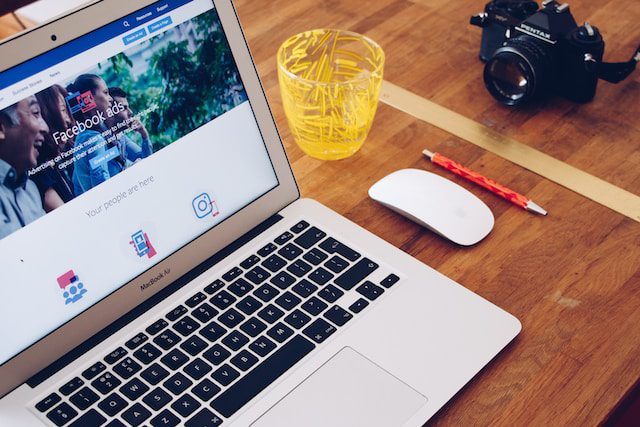
O Facebook Ads is a paid traffic platform from Meta, where where you can create highly targeted ads for an audience. With it, you can create ads in more dynamic formatssuch as images, videos and carousels.
With 2.95 billion active accounts, 109 million of which are Brazilian, this platform is a powerhouse to be considered for your digital marketing strategies. That's why don't ignore Facebook, thinking that it's a social network that has lost its relevance over time.
She didn't miss out! It also offers analysis tools to monitor and optimize ad performance.
3. Instagram Ads

Instagram has become one of the world's leading advertising platforms.É social network relevant both in terms of the number of users (1 billion monthly active users) and in business opportunities, generating traffic, leads and conversions.
Within the ads tool, you can use the data collected by Instagram to target ads at each type of user. This data is extracted by the algorithm and processed into information for your strategy.
Some examples of the data collected by Instagram are the formats of the posts you react to, what your searches are in the search tab and what places you go to (location).
Like Facebook Ads, Instagram Ads also offers various ad formats, from traditional boosts to Stories and Reels ads. With more options in this creative range, you can create ads that stand out and get more engagement.
4. YouTube Ads
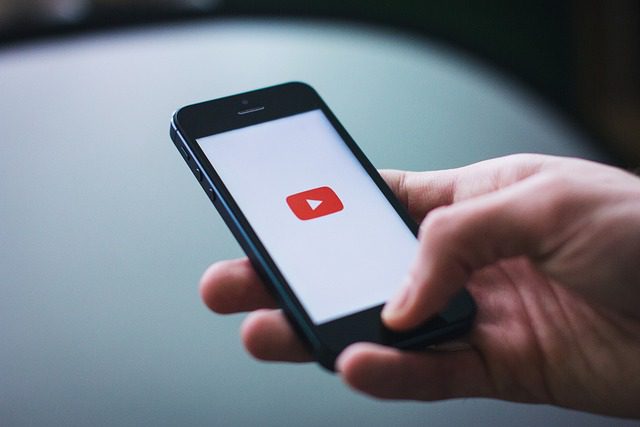
YouTube Ads is a video advertising platform offered by Google, to serve ads before the content on YouTube. Yes, that 5, 15 or 30 second advertisement that you have to watch before the video starts.
Ad types on YouTube are structured in a more complex way than on social networks such as Facebook or Instagram. In short, there are two main ad models:
- TrueViewads that only consume the campaign budget when the user watches the video for at least 30 seconds;
- BumperBumper ads, which are short and appear before the main video, are usually shorter and more dynamic.
Video ads on YouTube allow you to tell stories in a more engaging way, convey visual messages and take advantage of the popularity of the video format to generate engagement and interaction with your target audience.
Without a doubt, YouTube Ads is an interesting option for companies that need video advertising to demonstrate their services and products effectively..
5. LinkedIn Ads
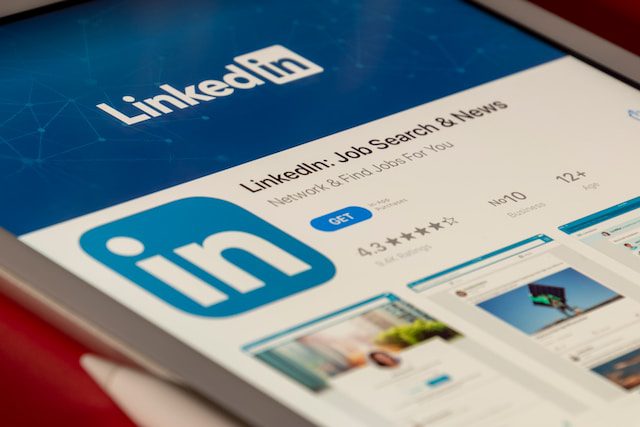
LinkedIn Ads is a paid advertising platform from Linkedin, the world's largest professional social network, where you can reach more than 850 million users.
There, you can target ads at users based on demographic and professional informationsuch as job title, sector and the company they work for. That's the great thing about LinkedIn!
For example, if you offer a service that is bought by a large number of doctors, you can serve your ads to these professionals. Or even to entire teams of companies that fit your ICP.
Another innovation in LinkedIn Ads is the option to send messages directly to users with promotional content. This way, your message doesn't compete for attention with others in the feed.
Now a tip: if you're promoting a B2B business, consider using LinkedIn in your paid traffic strategy.
6. TikTok Ads
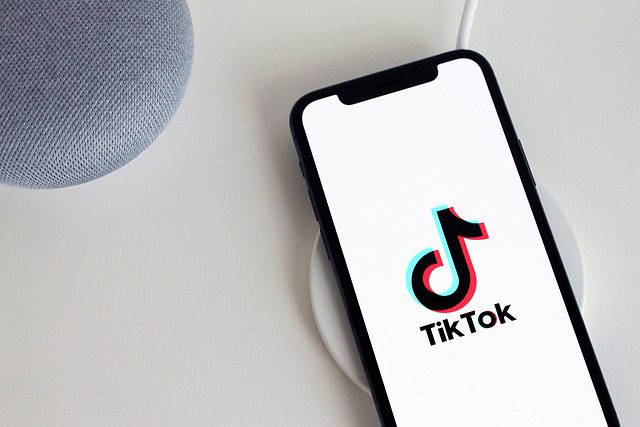
That TikTok has become a phenomenon is a fact. The platform's rapid growth has attracted more than 82 million users in Brazil, mainly among a young audience. As a result, TikTok Ads is a tool that has entered the radar of marketing professionals all over the world.
With various types of ads, including branded, in-feed, top view and branded effects, the content is highly customizableallowing you to target your ads based on various criteria, mainly browsing behavior.
But it's not just young people who have surrendered to TikTok. Artists and brands use the platform as a way of gaining user engagement even before a release.
With detailed reports on ad performance, you can adjust your campaigns according to the results obtained and generate impact and conversions.
7. Pinterest Ads
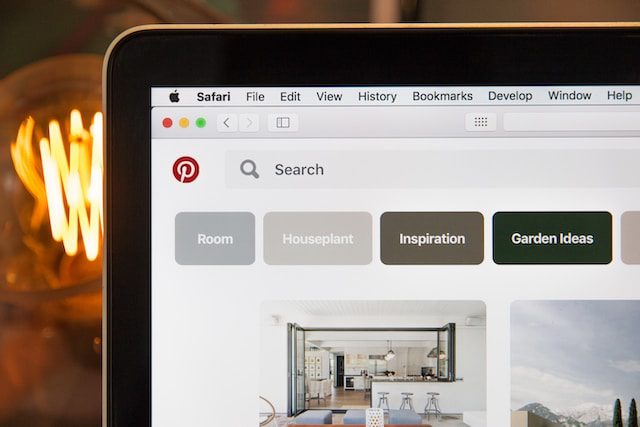
Never heard of it? Let us explain. O Pinterest Ads is a platform with over 400 million monthly active users worldwide.
The aim of the social network is to provide a space for visual media, i.e. images and short videos. In this way, users can discover new ideas and share their hobbies and work as inspiration.
Pinterest is a particularly popular platform for brands, with more than 2 million active advertisers on the platform. This figure is due to the fact that Pinterest has a high conversion rate, with 90% of users stating that Pinterest helps them make purchasing decisions.
Inspirational content, with a dash of promotion, allows reach a highly engaged target audience that is actively looking for inspiration and ideas for future projects.
Another interesting detail about Pinterest is that the platform's ads have a longer turnoverwhich means that the sponsored have a longer life cycle than ads on other social media platforms. They generate traffic and conversions for weeks or months after publication.
8. Waze Ads
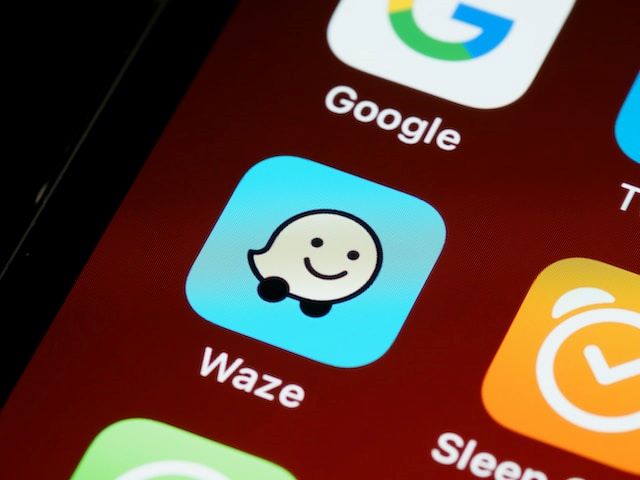
When you pass a fast food Waze offers you a discount coupon? If so, now you know it was a Waze Ads ad.
Waze Ads has more than 140 million monthly active users in more than 185 countries, making it one of the most popular navigation apps in the world.
It works from a GPS social, offering routes in real time based on information entered by the users themselves.
With Waze Ads you can reach people at the moment they are near your business or customer's location, or searching for a destination. The native ads are displayed directly on the app's map, so there's no way you'll miss them!
Campaigns are also highly segmented, so advertisers choose their target audience based on location, time of day and the type of vehicle they are using.
9. Live Streaming Ads
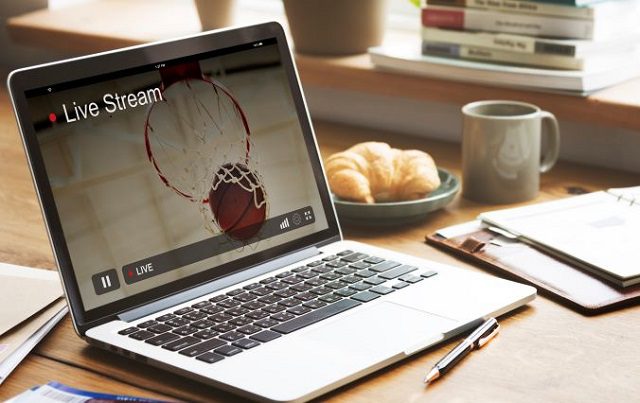
Broadcasts are a tool that allows companies to promote their products or services live. The strategy is to take advantage of the user's attention during the broadcast to promote your brand at the same time.
This format is used on platforms such as YouTube, Facebook and Instagram, where users can interact in real time with the livesincluding buying.
The live streaming ads can be presented as pre-roll, mid-roll or post-rolland can be targeted according to the profile of the target audience.
If you want to know more about this advertising opportunity, click here to read our article: Learn Everything You Need to Know About Streaming Ads.
10. Influencers

The power of suggestion has become a business. Brazil is currently home to approximately 500,000 influencers with at least 10,000 followers. Some have built highly profitable businesses and can influence the public to consume a product or service.
Therefore, this has been a very common form of paid traffic for companies wishing to use more than one promotional resource on social networks. Brands pay digital influencers to promote their products, reaching their audience more directly. more directly.
Influencers have loyal and engaged followers, which can lead to an increase in sales and brand recognition, since they are able to influence the purchasing behavior of those who follow them.
8 Expert Tips for Better Performance with Paid Traffic
Have you ever invested in paid traffic and not gotten the results you expected? Or maybe you're about to invest in this strategy, but you're afraid you won't get a good return on your investment?
We understand. Especially in the beginning, it can be a challenge to adjust campaigns. That's why we've put together some tips that will help you avoid the most common mistakes and maximize your results.
1. Define short- and long-term objectives
Generating paid traffic has both short-term and long-term effects. So you need to understand what to expect in each of these futures before you advertise, or you could be frustrated.
Short term
In the short term, goals such as lead generationdriving traffic to landing pages or promoting exclusive offers work more effectively. These goals are essential for driving immediate results and sparking interest in your products or services.
Long term
In the long term, focus on objectives such as increasing brand awareness, expanding your market share or boosting overall revenue. These goals are broader in scope and require consistent strategic planning over time.
How to Set Good Goals?
Writing down clear goals is the first step towards success.
Our tip is to use the SMART goals - specific, measurable, achievable, relevant and time-bound. By setting goals that meet these criteria, you have a solid basis for developing personalized strategies for each campaign and monitoring your progress more efficiently.
This approach also encourages decision-making based decisions. Think of the process below as a routine:
- Conduct A/B tests with the ads;
- Monitoring relevant metrics (CTR, CPC and ROI);
- Evaluate test performance;
- Collect data and produce reports;
- Update the ads;
- Revisit your goals.
In short, be be willing to adapt your strategy to achieve your goals.
2. Setting a budget
Shall we talk about money? There are two budgets:
- General budget, which encompasses all marketing activities;
- Individual budget, which determines how much each action can spend.
To determine each expense, it is important to consider factors such as benchmarks benchmarks, competitor analysis and the performance history of previous campaigns. This information will help inform your resource allocation decisions.
Should the Budget Be Flexible?
Be prepared to adjust your budget as necessary, based on the results you are achieving and the insights you gather along the way. Sometimes valuable opportunities can arise when you least expect them!
For this reason it is essential to regularly monitor and analyze the metrics of your campaigns.. In this way you ensure that you are getting the best return on investment and don't let these opportunities go unnoticed.
3. Invest in a Good Landing Page
A strategically designed landing page plays a crucial role in converting paid traffic into leads, customers or subscribers.
Often, companies don't pay enough attention to this stage and opt for simple or standardized designs. However, it is highly recommended that you take the time to improve the design and content of your landing page.
Take note of these valuable tips for creating a landing page excellent:
Improving the User Experience
Your landing page should be easy to navigate, with a logical structure that allows visitors to easily find the relevant information. The simpler the user experience when using the landing pagethe more conversions.
Building an Attractive Design
Invest in a visually appealing design that conveys professionalism and trust. Choose graphic elements, such as images and videos, to make the page more engaging.
Optimize Conversions
To create your landing page with strategic elements will increase conversion rates. This includes a clear call to action (CTA), prominent buttons and forms that are easy to fill out.
Writing Strategic Copy
Write persuasive content that highlights the benefits and value of your product or service. Use convincing language and arguments to arouse visitors' interest and action.
Remember that the landing page must be relevant to your target audience, in other words, the information selected for the copy should be what your customer is looking for, not what you think they need to know.
Adapt for Mobile Devices
Your landing page should be responsive and optimized for mobile devices, as more and more people are accessing the internet via smartphones and tablets. Before launching your landing page, test it on different devices and screen sizes to ensure a perfect user experience.
Follow up on results
Regularly monitor and analyze relevant metrics, such as conversion rates and average time on page, to identify areas for improvement and make adjustments. This way you can boost the performance of your landing page and the success of your paid campaigns.
4. Know your persona's needs
In order to truly understand the persona's pains, it is essential to carry out market research. With thorough analysis and valuable insights into the specific challenges faced by your persona, you can build paid traffic campaigns that target these people.
For example: imagine that your company is in the wellness segment. Through research and data analysis, you discover that your persona is struggling to find time to exercise regularly. They have a busy schedule and a lack of motivation.
This information about the pain of lack of time and motivation to exercise is what you can use in the discovery phase. With marketing strategies adapted to address this point, you can communicate about your short and efficient exercise program that fits easily into the busy daily routine.
And how can this knowledge be applied to the buying journey?
Start by mapping out the buying journey, so you can follow the entire process, from the first contact with the service or product to the purchase. With this information in handyou will be able to understand at which the persona may face obstacles to buying.
During the consideration phase, for example, doubts about the product's effectiveness will arise. In this case, you can develop information materials and customer testimonials to help overcome these doubts.
After the purchasekeep listening! It's important to listen to and collect customer feedback. By listening carefully to your customers' opinions and experiences, you'll be able to understand their pains and concerns about the product or service.
By getting to know the persona's pains, you can develop targeted strategies to make the experience experience, whether for the lead or the customer.
5. Make Only Real Ads
Scams, misleading links, advertisements with false information... Anyone who is active on social media is liable to fall into one of these situations. That's why transparency is your greatest ally!
When developing advertisements, it is essential to be honest and truthful about the products or services on offer. Misleading with exaggerated information can damage the brand's reputation and undermine consumer confidence.
To ensure that your ads are genuine, start with a deep understanding of what you're selling. Know its characteristics, benefits and limitations in order to communicate them clearly and precisely to potential customers.
In addition, it is essential to avoid the temptation to promise more than you can deliver. Be realistic about the capabilities of what you offer and highlight your strengths in an authentic way.
Honesty also applies to the language and tone used in advertisements. Avoid vague promises. Instead, focus on informing with useful that will help consumers make informed decisions.
6. Make the CTA clear
The consumer has seen the ad... now what? It's necessary to determine what action is expected, whether it's entering the site to buy, talk to a salesperson or hire a service.
By directing the consumer's action, you reduce ambiguity in decision-making. This increases the chance that users will follow through and, consequently, increases your ad's conversion rate.
- Selling a course: Sign up to watch the lessons and receive the material;
- Promoting a new product or service: Making an online purchase.
It is also important to communicate the action persuasively. Using convincing elements in the CTA and highlighting the advantages of the product or service encourages users to take the desired action.
Remember that clarity in the desired action must be applied to all marketing channels, from paid ads to emails, social media posts and landing pages.
7. Choosing the right platform
Digital marketing platforms are constantly changing. Platform trends and features evolve rapidly, and it's important to keep up with them in order to make the most of the opportunities available.
Therefore, consider the nature of your content before choosing the platform for your ad.
Objective
Clearly define your marketing objectives. Do you want to increase brand awareness, generate leads, promote sales or strengthen customer relationships? Each platform has its strengths and may be better suited to achieving certain objectives.
Channel
Understand which platforms your target audience is present on. Give preference to identifying which channels are best suited to reaching them effectively.
Format
Some platforms are better suited to visual images, such as Instagram and Pinterest, while others are more video-oriented, such as YouTube and TikTok. Choose a platform that aligns well with the format of your content.
Engagement
Evaluate the level of user engagement on each platform, observe whether users are actively interacting with the content, leaving comments and sharing.
8. Managing Paid Media with Artificial Intelligence
Artificial intelligence (AI) is transforming the way we manage paid media, automating processes and providing valuable insights. Many of the strategies mentioned above can be executed with greater precision and efficiency using AI tools. Check them out!
- Goal setting: AI can adjust goals based on real-time data, using machine learning algorithms to predict trends and recommend achievable objectives.
- Budget optimization: predictive AI models analyze ROI in real time and automatically adjust budgets, ensuring efficient allocation of resources.
- Landing page creation: AI tools can generate personalized content and carry out automated A/B tests to optimize the user experience and increase conversion rates.
- Knowledge of the Persona: AI uses sentiment analysis and advanced segmentation to offer a deep understanding of the persona's needs and behaviors, allowing for highly personalized campaigns.
- Veracity in Ads: automated fact-checking and real-time feedback monitoring guarantee the accuracy of information in ads, avoiding exaggeration and deception.
- Improved CTAs: performance analysis and real-time personalization of CTAs increase clarity and effectiveness, encouraging users to take the desired actions.
- Choosing the Ideal Platform: AI analyzes performance on different platforms and recommends the most effective channels to reach the right target audience.
Various AI tools can be integrated into paid media management to automate and optimize campaigns:
- Google Ads and Facebook Ads with AI: automate bid optimization and audience segmentation.
- Intelligent Chatbots: interact with leads and customers in real time, collecting data and personalizing offers.
- Data Analysis Platforms: tools such as Google Analytics use AI to provide detailed insights into campaign performance.
Conclusion
With this article you know what paid traffic is, how it works and the main tools available on the market. Now you're one step closer to achieving your marketing goals and extending your brand's reach in the market.
And count on Tess AI, Pareto's AI to optimize your company's paid media management! This way, you can focus on strategic and creative activities, taking advantage of all the potential your team has to offer.




